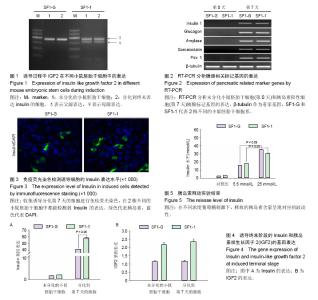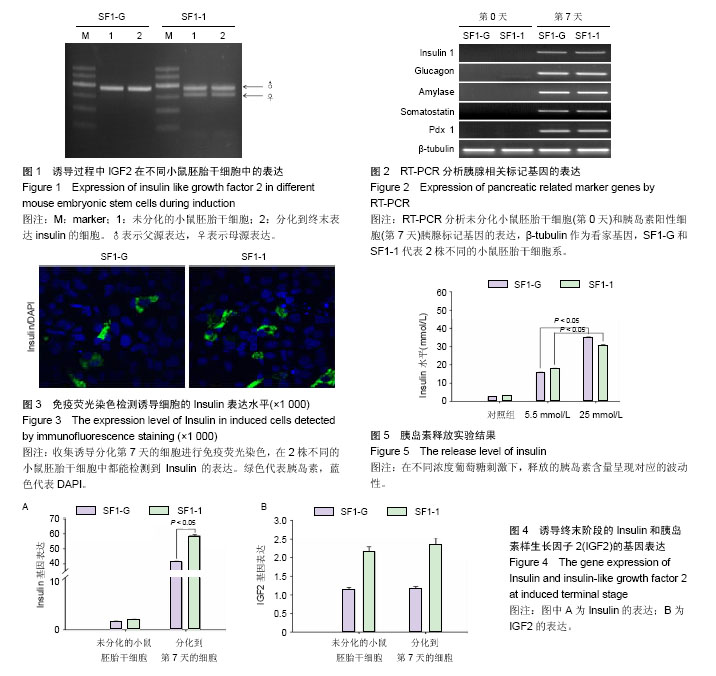| [1] Thorvaldsen JL, Duran KL, Bartolomei MS. Deletion of the H19 differentially methylated domain results in loss of imprinted expression of H19 and Igf2. Genes Dev. 1998; 12(23):3693-3702.[2] DeChiara TM, Robertson EJ, Efstratiadis A. Parental imprinting of the mouse insulin-like growth factor II gene. Cell. 1991;64(4):849-859.[3] El-Naggar AK, Lai S, Tucker SA, et al. Frequent loss of imprinting at the IGF2 and H19 genes in head and neck squamous carcinoma. Oncogene. 1999;18(50):7063-7069.[4] 冷慧敏,周亮,钱卫平,等.胰岛素样生长因子-2基因印迹模式异常与男性不育的关系[J].生殖与避孕, 2012, 32(4):254-258.[5] Rancourt RC, Harris HR, Barault L, et al. The prevalence of loss of imprinting of H19 and IGF2 at birth. FASEB J. 2013; 27(8):3335-3343.[6] Sakian S, Louie K, Wong EC,et al. Altered gene expression of H19 and IGF2 in placentas from ART pregnancies. Placenta. 2015;36(10):1100-1105.[7] Zastavna D, Makukh H, Tretjak B, et al. Loss of Imprinting of IGF2 Gene in the Chorionic Tissues of Spontaneously Eliminated Human Embryos. Genet Epigenet. 2013;5:17-22.[8] Leick MB, Shoff CJ, Wang EC, et al. Loss of imprinting of IGF2 and the epigenetic progenitor model of cancer. Am J Stem Cells. 20119;1(1):59-74.[9] Nakagawa H, Chadwick RB, Peltomaki P, et al. Loss of imprinting of the insulin-like growth factor II gene occurs by biallelic methylation in a core region of H19-associated CTCF-binding sites in colorectal cancer. Proc Natl Acad Sci U S A. 2001;98(2):591-596.[10] Zhang M, Wu CH, Zhu XL, et al. Loss of imprinting of insulin-like growth factor 2 is associated with increased risk of primary lung cancer in the central China region. Asian Pac J Cancer Prev. 2014;15(18):7799-7803.[11] 潘其重, 陆日坚,闭伟文,等.胃癌胰岛素样生长因子2基因印记初探[J].医学信息, 2013, 26(30):98. [12] Mishima C, Kagara N, Tanei T, et al. Loss of imprinting of IGF2 in fibroadenomas and phyllodes tumors of the breast. Oncol Rep. 2016;35(3):1511-1518.[13] Pan Y, He B, Chen J, et al. Gene therapy for colorectal cancer by adenovirus-mediated siRNA targeting CD147 based on loss of the IGF2 imprinting system. Int J Oncol. 2015;47(5): 1881-1889.[14] Sun H, Pan Y, He B, et al. Gene therapy for human colorectal cancer cell lines with recombinant adenovirus 5 based on loss of the insulin-like growth factor 2 imprinting. Int J Oncol. 2015; 46(4):1759-1767.[15] Mutskov V, Felsenfeld G. The human insulin gene is part of a large open chromatin domain specific for human islets. Proc Natl Acad Sci U S A. 2009;106(41):17419-17424.[16] Vu TH, Hoffman A. Alterations in the promoter-specific imprinting of the insulin-like growth factor-II gene in Wilms' tumor. J Biol Chem. 1996;271(15):9014-9023.[17] Christofori G, Naik P, Hanahan D. Deregulation of both imprinted and expressed alleles of the insulin-like growth factor 2 gene during beta-cell tumorigenesis. Nat Genet. 1995;10(2):196-201.[18] D'Amour KA, Bang AG, Eliazer S, et al. Production of pancreatic hormone-expressing endocrine cells from human embryonic stem cells. Nat Biotechnol. 2006;24(11):1392-1401.[19] Liu SH, Lee LT. Efficient differentiation of mouse embryonic stem cells into insulin-producing cells. Exp Diabetes Res. 2012;2012:201295.[20] Ratajczak MZ. Igf2-H19, an imprinted tandem gene, is an important regulator of embryonic development, a guardian of proliferation of adult pluripotent stem cells, a regulator of longevity, and a 'passkey' to cancerogenesis. Folia Histochem Cytobiol. 2012;50(2):171-179.[21] Zimmerman DL, Boddy CS, Schoenherr CS. Oct4/Sox2 binding sites contribute to maintaining hypomethylation of the maternal igf2/h19 imprinting control region. PLoS One. 2013; 8(12):e81962.[22] Li T, Chen H, Li W, et al. Promoter histone H3K27 methylation in the control of IGF2 imprinting in human tumor cell lines. Hum Mol Genet. 2014;23(1):117-128.[23] Zhang H, Niu B, Hu JF, et al. Interruption of intrachromosomal looping by CCCTC binding factor decoy proteins abrogates genomic imprinting of human insulin-like growth factor II. J Cell Biol. 2011;193(3):475-487.[24] Huang YZ, Zhan ZY, Sun YJ, et al. Intragenic DNA methylation status down-regulates bovine IGF2 gene expression in different developmental stages. Gene. 2014;534(2):356-361.[25] Liu M, Roth A, Yu M, et al. The IGF2 intronic miR-483 selectively enhances transcription from IGF2 fetal promoters and enhances tumorigenesis. Genes Dev. 2013;27(23): 2543-2548.[26] Yang B, Wagner J, Damaschke N, et al. A novel pathway links oxidative stress to loss of insulin growth factor-2 (IGF2) imprinting through NF-κB activation. PLoS One. 2014;9(2): e88052.[27] Petrik J, Pell JM, Arany E, et al. Overexpression of insulin-like growth factor-II in transgenic mice is associated with pancreatic islet cell hyperplasia. Endocrinology. 1999;140(5): 2353-2363.[28] Lopez MF, Dikkes P, Zurakowski D, et al. Regulation of hepatic glycogen in the insulin-like growth factor II-deficient mouse. Endocrinology. 1999;140(3):1442-1448.[29] Gong SP, Kim H, Lee EJ, et al. Change in gene expression of mouse embryonic stem cells derived from parthenogenetic activation. Hum Reprod. 2009;24(4):805-814.[30] Kono T, Obata Y, Wu Q, et al. Birth of parthenogenetic mice that can develop to adulthood. Nature. 2004; 428(6985): 860-864.[31] Gabory A, Ripoche MA, Yoshimizu T, et al. The H19 gene: regulation and function of a non-coding RNA. Cytogenet Genome Res. 2006;113(1-4):188-193.[32] De-Groot N, Hochberg A. Gene imprinting during placental and embryonic development. Mol Reprod Dev. 1993;36(3): 390-406.[33] Vu TH, Hoffman AR. Promoter-specific imprinting of the human insulin-like growth factor-II gene. Nature. 1994;371 (6499): 714-717.[34] Ogawa O, Eccles MR, Szeto J, et al. Relaxation of insulin-like growth factor II gene imprinting implicated in Wilms' tumour. Nature. 1993;362(6422):749-751. |

